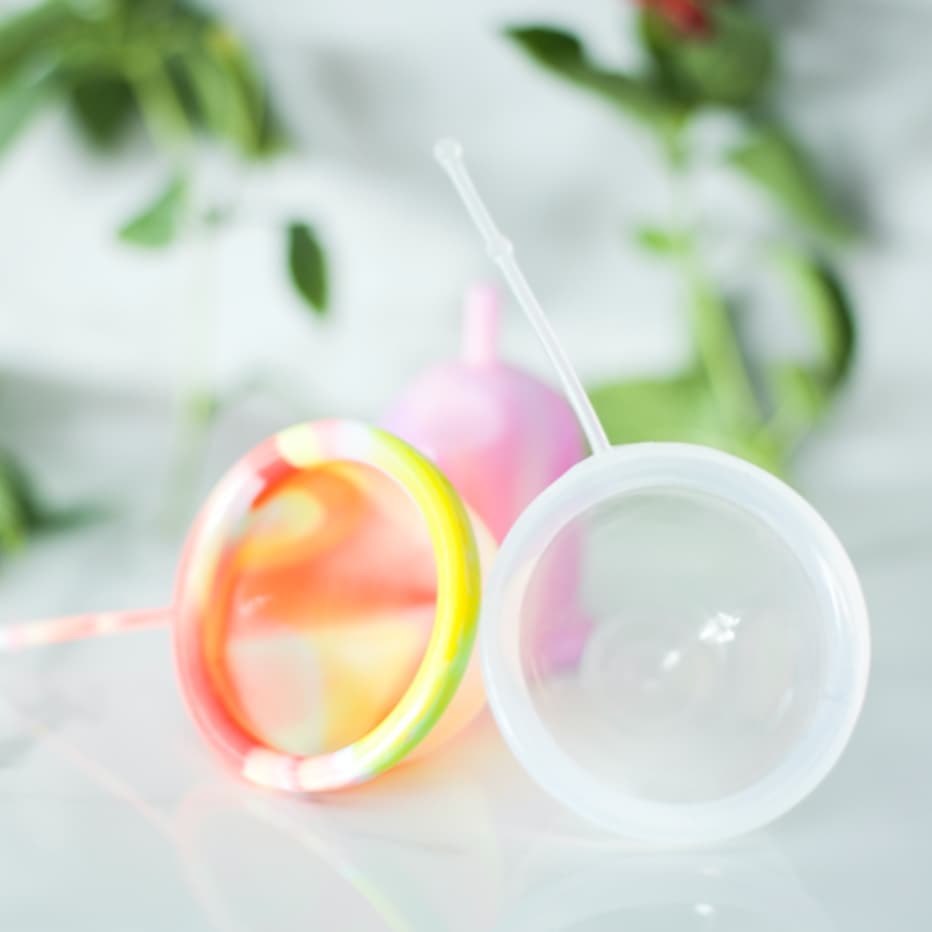In the world of menstrual products, the menstrual disc has recently emerged as a popular alternative to traditional options like tampons and pads, promising 12 hours of protection.
What is a menstrual disc?
A menstrual disc is a small, flexible disc made from medical-grade silicone, rubber, or thermoplastic elastomer. Unlike tampons, which are cylindrical, menstrual discs have a flatter, more shallow shape that is designed to fit at the base of the cervix. This design helps catch menstrual fluid and hold it securely for up to 12 hours, making it a convenient option for many people.
Designed to be worn internally like a tampon but with a very unique shape and mechanism, the menstrual disc offers a range of benefits and some distinct differences from menstrual cups.
Menstrual disc vs. menstrual cup
While both menstrual discs and menstrual cups are reusable and eco-friendly alternatives to tampons and pads, they have some distinct differences. Menstrual discs are flatter and sit at the base of the cervix, whereas menstrual cups are typically more cylindrical and sit lower in the vaginal canal.
The insertion and removal methods differ; discs are often folded and placed behind the pubic bone, while cups are generally pinched and positioned lower in the vagina. Menstrual cups often have a larger capacity than discs, making them a better choice for very heavy flow days.
View this post on Instagram
5 Benefits of the menstrual cup
1. Long wear time
Menstrual discs can be worn for up to 12 hours, making them an excellent choice for those with busy schedules or who prefer not to change menstrual products frequently.
2. Comfort
Once properly inserted, many users find menstrual discs to be more comfortable than tampons or pads, especially since they don’t create a sensation of dryness.
3. Less odour
Because the menstrual fluid is sealed away from the air, menstrual discs can help reduce the potential for odor compared to other internal options.
4. No leaks
If inserted correctly, menstrual discs are known for their reliable leak protection, which can be especially beneficial for heavy flow days.
5. Menstrual cup alternative
For those who find menstrual cups too large or difficult to manage, menstrual discs can be a more user-friendly alternative with a similar eco-friendly and cost-effective profile.
How to use a menstrual disc safely
- Read the instructions: Each brand of menstrual disc may have slightly different instructions, so be sure to read the manufacturer’s guidelines before use.
- Wash your hands: Always wash your hands thoroughly before inserting or removing the disc to avoid introducing bacteria.
- Insertion: To insert a menstrual disc, you’ll typically need to fold it and then place it at the base of your cervix. The disc should be positioned so that it sits flat against the vaginal wall. Some people find it helpful to use a finger to push the disc behind the pubic bone for a snug fit.
- Removal: To remove the disc, you should gently hook your finger around the rim and pull it out. It’s a good idea to do this over the toilet to manage any spills more easily.
- Cleaning: If your menstrual disc is reusable, wash it with mild soap and water between uses. Some discs are also dishwasher-safe or can be sterilized by boiling.
- Replacement: Follow the manufacturer’s guidelines on how often to replace your menstrual disc. Some discs are designed to last several years, while others may need to be replaced more frequently.
View this post on Instagram
Important considerations
Insertion and removal difficulties: Some people may find inserting or removing the disc challenging at first. It might take a bit of practice to get comfortable with the process.
Potential for discomfort: If not inserted correctly, the disc can cause discomfort or even pain. Ensuring proper placement is key to avoiding these issues.
Risk of toxic shock syndrome (TSS): Although TSS is rare with menstrual discs, it’s still a risk. Ensure you follow hygiene guidelines and don’t leave the disc in for longer than recommended.
Allergies and sensitivities: Be aware of any potential allergic reactions to the materials used in the disc. If you experience irritation, discontinue use and consult a healthcare provider.
ALSO SEE:
Featured Image: @lummacups/Instagram

